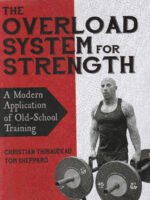Ultra-Reliable and Low-Latency Communications (URLLC) Theory and Practice discusses the typical scenarios, possible solutions, and state-of-the-art techniques that enable URLLC in different perspectives from the physical layer to higher-level approaches, aiming to tackle URLLC’s challenges with both theoretical and practical approaches, which bridges the lacuna between theory and practice.
With long-term contributions to the development of future wireless networks, the text systematically presents a thorough study of the novel and innovative paradigm of URLLC; basic requirements are covered, along with essential definitions, state-of-the-art technologies, and promising research directions of URLLC. To aid in reader comprehension, tables, figures, design schematics, and examples are provided to illustrate abstract engineering concepts and make the text more accessible to a broader readership, and corresponding case studies are included in the last part of the book.
Fundamental problems in URLLC, including designing building blocks for URLLC, radio resource management in URLLC, resource optimization, network availability guarantee, and coexisting with other future mobile networks, are also discussed.
In Ultra-Reliable and Low-Latency Communications (URLLC) Theory and Practice, readers can expect to find detailed information on:
- BCH and analog codes, stable matching, OFDM demodulation and turbo coding, and semi-blind receivers for URLLC
- MIMO-NOMA with URLLC, PHY and MAC layer technologies for URLLC, and Network slicing or SDN for URLLC and eMBB
- Integrating theoretical knowledge into deep learning for URLLC, Energy-Latency tradeoff in URLLC, and Downlink transmission for URLLC under physical layer aspects









Be the first to review “Ultra-Reliable And Low-Latency Communications (Urllc) Theory And Practice – Advances In 5G And Beyond”